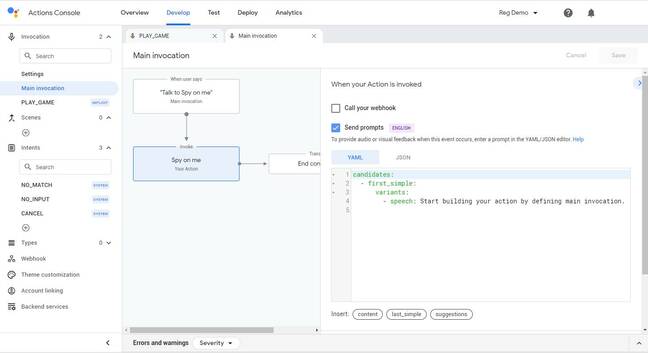Facebook has finally said it would now prohibit the sale of all historical artifacts due to rampant black market trade in looted antiquitieson the site, per the New York Times—a problem the social media company has known about for years.
The new rules ban any “attempts to buy, sell or trade in historical artifacts,” defined as “rare items of significant historical, cultural or scientific value,” on Facebook or Instagram. It also comes after years of Facebook doing very little to restrict trade in those same objects.
Reporting last month in the Times found at least 90 Facebook groups, mostly written in Arabic, with tens of thousands of members that were “connected to the illegal trade in Middle Eastern antiquities.” In those groups, salespeople would post images or descriptions of objects and often then direct interested buyers to contact them via chat or other services to arrange payment or meetings in person; in some cases, the buyers simply posted that they were interested in acquiring a specific type of artifact. Some of the groups also trafficked in do-it-yourself guides on how others could get into the black market antiquities trade.
Some of the items may have been originally acquired by Islamic State terrorists, who in addition to destroying thousands of years’ worth of artifacts and archaeological sites in regions under their control in Iraq, Syria, and Libya, looted those sites and other cultural institutions like museums for profit. Armed groups affiliated or working with other extremist groups and criminal organizations have participated as well. A United Nations Security Council report in January 2020 noted evidence of numerous excavations by Islamic State or al-Qaeda affiliates and concluded that social media groups “dedicated to antiquities trafficking continue to be created, while the area of origin of trafficked artefacts increases, continuously revealing a web of interconnectivity among antiquities traffickers.”
While in some cases looters and buyers used coded language to discuss the deals, Antiquities Trafficking and Heritage Anthropology Research Project (ATHAR) co-directors Katie Paul told the Times, in other instances it was all playing out in the open, right down to photos and videos of the objects being stolen to prove they were genuine. Paul told Artnet News that the countries of origin are “places where no legal trade exists,” making the sales uniformly illegal.
The total number of groups identified by researchers and activists is at least 200, according to the Times, and those are just the ones that they have caught onto. ATHAR released a report in 2019 finding “488 individual admins managing a collective 1,947,195 members across 95 Facebook Groups” comprised of a “mix of average citizens, middlemen, and violent extremists,” with what appeared to be a high degree of coordination between the admins of those groups:
Group members include a mix of average citizens, middlemen, and violent extremists. Violent extremists currently include individuals associated with Syrian-based groups like Hay’at Tahrir Al Sham (HTS), Hurras Al-Din, the Zinki Brigade and other non-Syrian based Al-Qaeda or Islamic State in Iraq and Syria (ISIS) affiliates. All of these groups are using Facebook as a platform for antiquities trafficking, whether through direct interaction with buyers and sellers or through the use of middlemen who straddle transactions between the general public and terrorist groups.
Administrators usually demanded that the black market traders cough up fees from any sales related to their membership in groups, according to the report. Around 36 percent of the sellers in an ATHAR case study of Syrian groups were actually located in conflict zones, while another 44 percent were in countries bordering conflict zones.
ATHAR co-director and Shawnee State University professor Amr Al-Azm, who had previously worked in Syria as an antiquities official, told the Times artifacts were also flowing from Yemen, Egypt, and Tunisia and that Facebook could have taken action as early as 2014, when deleting the groups would have had a bigger impact. He added it was a “supply and demand issue” and that deleting Facebook pages instead of archiving evidence destroys “a huge corpus of evidence” that might later be used to track down artifacts.
A Facebook report released on Tuesday acknowledged the issue, conceding significant pitfalls in policies that allowed trade in historical artifacts except where “it is clear that the artifacts have been looted.” Key findings included there is a “good chance that historical artifacts traded online are either illegal or fake, as an estimated 80% of antiquities have ‘sketchy provenances,’” as well as that there “is criticism that Facebook’s policy has led the platform to become a digital black market where users buy and sell illicit antiquities originating from conflict zones.”
Greg Mandel, a spokesperson for Facebook, told the Times that trade in “stolen artifacts” was already prohibited by site rules. (Paul and Al-Azm have disagreed that Facebook was actively enforcing those policies in the past, writing in 2018 that “Facebook does not currently enforce an explicit ban on transactions involving illicit cultural property.”)
“To keep these artifacts and our users safe, we’ve been working to expand our rules, and starting today, we now prohibit the exchange, sale or purchase of all historical artifacts on Facebook and Instagram,” Mandel added.
Paul told the Times the new policy is “an important shift in [Facebook’s] position on the trade in cultural heritage” and demonstrates they are aware of “illegal and harmful activity” on the site. But the policy is “only as good as its enforcement,” she added.






